News out of Disney today is the imminent closure of venerable game studios LucasArts. I can’t say this comes as much of a surprise as the company seemed to be going virtually nowhere for several years now.
However, the studio shouldn’t pass into oblivion without remarking on the impact they had earlier on. LucasArts was a client of my game testing company in the late ’80s and ’90s. They were also one of the powerhouses of the industry in its earliest years. Reviewers and customers flocked their booths at events and couldn’t wait to see what they’d come up with next. Employees who worked there in the early years coveted the opportunity and were looked upon with some degree of awe by many others working for competitors. Working at Electronic Arts felt like a job. Working at Skywalker Ranch didn’t even sound like a job. It sounded like an adventure. Rather apropos I must say. LucasArts was, oddly enough, the Disney of their day. Their titles seemed imbued with magic — the kind that appeals most to the child in all of us.
Their portfolio of games included some incredible titles that pushed the boundaries of technology and players alike. Sometimes they went a bit too far but we always expected that of the studio. Of course its most potent license produced a myriad of Star Wars related games but, frankly, I think that lead directly to their undoing. As Star Wars interest waned so too did interest in the studio. They seemed to forget their own eccentric creativity instead trying to churn out another “easy blockbuster.”
Ignoring all the Star Wars titles you still find some unbelievable games among their catalog that deserve special mentions (in chronological order):
Maniac Mansion (1987)
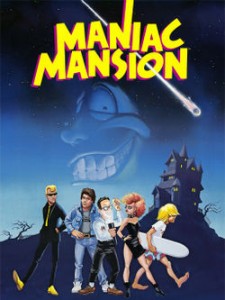 I was barely aware of LucasArts in 1987. I went to the 1987 Consumer Electronics Show and they had a small booth set up showing this game. I was immediately impressed with it, and remember, this is from someone who played games 10 hours a day for a living. It was different than everything we’d been working with. Yes, it was another adventure game but it had a personality that set it apart from everything else on the market at the time. This title would be mentioned time and again as proof positive that LucasArts was a breed apart.
I was barely aware of LucasArts in 1987. I went to the 1987 Consumer Electronics Show and they had a small booth set up showing this game. I was immediately impressed with it, and remember, this is from someone who played games 10 hours a day for a living. It was different than everything we’d been working with. Yes, it was another adventure game but it had a personality that set it apart from everything else on the market at the time. This title would be mentioned time and again as proof positive that LucasArts was a breed apart.
Battlehawks: 1942 (1988)
One of the first games to really emphasize what was possible technically with respect to representing historical accuracy. This naval air combat sim had it all for the day and got many players to go out and buy their first joystick.
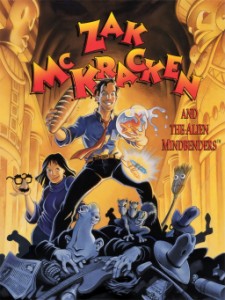 Zak McKracken and the Alien Timebenders (1988)
Zak McKracken and the Alien Timebenders (1988)
This was an adventure game that introduced most of the world to LucasArts as a premier developer and publisher. Many viewed it as the best adventure game ever produced (even today). It really set the stage for another title — not too far in their future — that would become their most successful franchise.
Their Finest Hour (1989)
This simulation was, simply put, one of the best combat simulations ever to be produced. Everyone bought it and we all used it as the measuring stick for virtually every other combat sim for several years, including another great upcoming title from LucasArts.
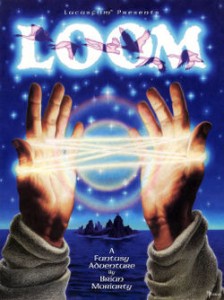 Loom (1990)
Loom (1990)
Loom was quite easily one of the strangest pieces of software any of us had encountered to that point — and very likely since. Loom was a departure from most everything gamers had come to expect. It threw away the standard interface we’d all become accustomed to and tried something entirely novel. You essentially interacted with the game by playing music which, in turn, triggered various spells that affected the game in different way. Playing a tune (called a draft) backwards would often have a different effect. It experienced a very mixed reception with many reviewers just giving up. I remember one such review that gave it a positive score even though the reviewer had no idea how to play it. It was just that fascinating. Once you did get it down the actual game took only a few hours at most to play. Aside from that, the spell Loom cast best of all was to once again set LucasArts on a pedestal above the rest of the fray.
The Secret of Monkey Island (1990)
There’s probably not a gamer alive today who hasn’t at least heard about this franchise. It dominated the sales charts and changed adventure gaming forever. No small task with the likes of adventure game monolith Sierra Online at their peak. It spawned four sequels (all of them hits in their own right) and introduced the world to Guybrush Threepwood. Who could forget that guy? It had a wit all its own and graphics that made jaws drop. It didn’t hurt that the story was excellent as well.
Secret Weapons of the Luftwaffe (1991)
Another combat sim that set the bar for the genre that had first been set by LucasArts own previous title, Their Finest Hour. Everyone owned it and talked about the incredible array of “secret” airplane designs. SWOTL, as it became known, was the first acronym many of us associated with any game.
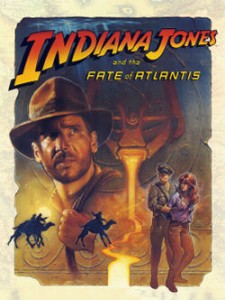 Indiana Jones and the Fate of Atlantis (1992)
Indiana Jones and the Fate of Atlantis (1992)
This was an interesting endeavor. It originally shipped to much praise and commercial success only to be dramatically improved almost immediately with a heavy dose of new technology. It was one of the best examples of digitized audio on the market. The graphics represented some of the best of the time and the story kept you on the edge of your seat. It includes several modes of play designed to appeal to several types of gamers and succeeded at getting everyone to play all of them.
Day of the Tentacle (1993)
Yet another totally off-the-wall adventure game that had everyone talking. It somehow never quite caught on with the public but we played it endlessly at Top Star (my game testing company). I usually could tell a hit by what everyone chose to play even after getting paid to play it all day long. This was one of the few exceptions but it deserved a much better fate.
Sam & Max Hit The Road (1995)
This silly adventure game is, without question, one of the best adventure games ever produced. The pair of Sam and Max were simply hilarious and had players inventing new ways to get them to interact with the environment. They’d spend hours doing all sorts of unnecessary things just to see how the characters would respond. It boasted some incredible attention to detail from the designers.
Full Throttle (1995)
Designed by Tim Schafer who was still recovering from the failure of Day of the Tentacle, this adventure game proved to everyone that he had the goods. It was loaded with testosterone as well as a bevy of fantastic voice talent.
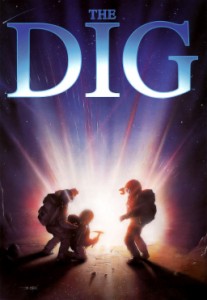 The Dig (1995)
The Dig (1995)
This is my personal gem of the entire list. A would-be film that never got produced. It was written by industry luminaries Orson Scott-Card, Steven Spielberg and Brian Moriarty (considered one of the most talented interactive fiction writers of the day). The Dig was an immersive sci-fi adventure game that just enveloped the player in its tale. I couldn’t get enough of it and browbeat the editors to make it PC Games Game of the Year in 1995. It’s one of my all-time favorite games and quite possibly my favorite. In addition to everything else it boasted top-notch graphics and a great atmospheric soundtrack. Lost to history is that, at the time, the general feeling in tech and Hollywood circles, was the movies and game were essentially destined to shortly become two sides of the same coin. The Dig was one of the first efforts to make that case. It couldn’t because movies and games aren’t the same thing and never will be, but there was a time when many talented people were certain they were.
Outlaws (1997)
This first-person shooter was one of the very first to take the genre into the Old West. I’d pretty much passed on it but one of my contacts at id Software kept going on and on about it (none other than co-founder John Romero who said it was easily one of his favorite games). At an industry event we were talking about the best FPS games and John wouldn’t shut up about it so I gave it a shot (forgive the pun) and never looked back. It’s really a great FPS title that most everyone enjoyed.
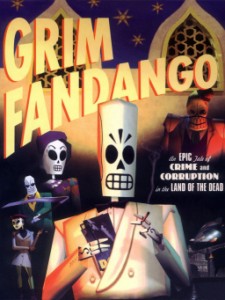 Grim Fandango (1998)
Grim Fandango (1998)
This title was, in my view, one of the ballsiest risks LucasArts may have ever taken. Tim Schafer had the guts to put this concept in front of them after the debacle of Day of the Tentacle and the success of the far more mainstream Full Throttle. I would have loved to have been in that marketing meeting. When I first saw this unique adventure game I couldn’t stop scratching my head. It seemed way too nuts for consumption. Once it neared completion the press fawned all over it. But then, when it finally shipped it just sat there. Consumers had the same initial reaction to it that I’d had months before. Corporate response was pretty harsh. Within short order many of the staff responsible for it were let go and LucasArts began to withdraw from the genre pretty much forever. What no one knew at the time was that, at least for the foreseeable future, adventure game sales were doomed. Regardless of the end result, Grim Fandango is still an excellent game that evokes positive memories for many.
